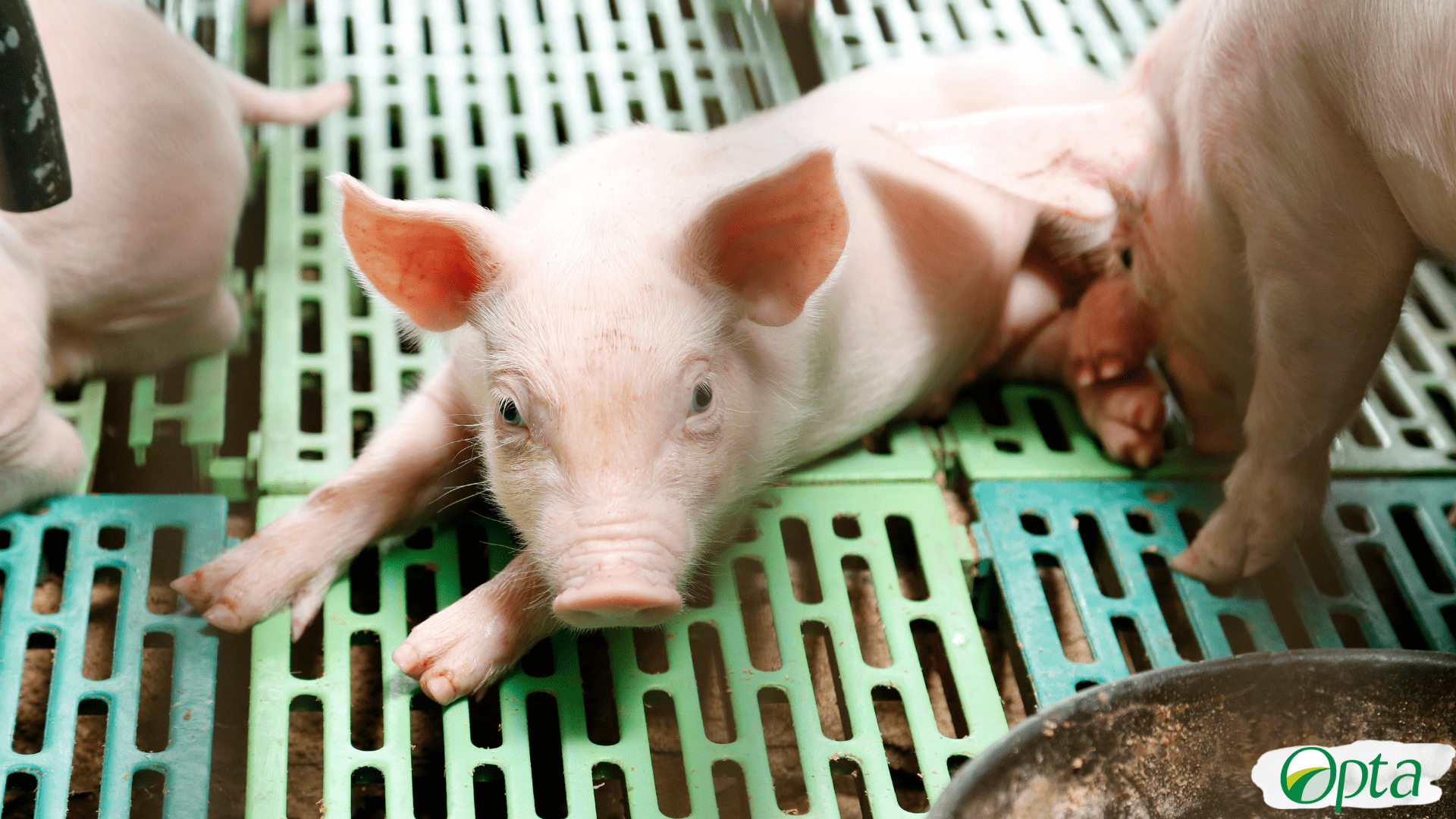Supplementation of vitamins A / D / E in ruminants
Vitamins are complex molecules found naturally or artificially in foods or as precursors to them. They are part of several metabolic processes and are required […]
- 23/06/2021
- ler mais...

In pig production, weaning piglets is a critical moment that requires a lot of attention. In the meantime, the animals are relocated in new lots, which leads to social stress and increased cortisol. Then, there is a switch from a liquid diet based on breast milk to a solid diet, which ends up contrasting with an incompletely developed intestine. However, the factors that raise attention do not end there, with the increase of piglets per litter, competition for colostrum also increases, which can increase the mortality rate if there is no intervention.
As well as, mentioned in the previous paragraph, the intestine is still in the development stage, and the endogenous enzymes responsible for the digestion of corn and soybean meal are on an increasing curve. Therefore, forcing solid diets will damage the intestinal epithelium, reducing the nutrient absorption capacity.
Thus, it is essential to formulate and supply diets with a high digestibility content, with ingredients such as whey, soy protein concentrate, micronized soy and precooked corn.
Whey is a co-product of the dairy industry, more precisely cheese production. It has a high nutritional value, high digestibility and palatability, and can be found in solid (powder) or liquid form.
Whey is considered by many nutritionists to be an ideal component for weaning piglets. However, in addition to the characteristics mentioned, it has an average of 70% lactose and 12% high quality crude protein based on dry matter. Lactose serves as a nutrient for lactobacillus (probiotic microorganisms) in the piglet’s intestine, improving the intestinal environment. The shelf life reduces its content from 25% to 50%. In adult animals, there is a limitation for the digestion of lactose at the intestinal level due to the low level of lactose in the intestine.
During the abrupt change in piglet feeding, while milk casein (of high biological value) is replaced by less digestible vegetable proteins for the piglet, hypersensitivity in the GIT may occur.
The protein efficiency of whey is 20% higher than that of casein, with digestibility around 90%, being compared to that of milk and, therefore, much higher than that of soybeans, making it a good alternative for the adaptation of newly weaned animals.
In an experiment carried out by Hauptli et al. (2005) with 48 piglets with an initial age of 21 days, 4 treatments (T0 – CONTROL; T1 – 7% SERUM; T2 – 14% SERUM; T3 – 21% SERUM.), Concluded that the use of whey up to 21 % improved piglet feed conversion.
In another study by Fernandes et al. (2013), it was observed that piglets that received 10% and 20% whey had a lower incidence of diarrhea than animals that received the control treatment. That is, this improvement in intestinal health is possibly due to the fact that the pH is reduced as a result of the production of acetic, propionic, butyric and lactic acids. Reducing the pH helps to control the proliferation of pathogenic microorganisms.
Finally, using whey may be an alternative to reduce the cost of feeding the pigs, provided that the logistics of transport and storage are evaluated. In addition, its consumption still avoids environmental pollution problems, which occur when the serum is not used. However, there is an increase in the volume of waste produced, which can be bypassed with the production of biodigesters if economically viable.
Access our LinkedIn: OPTA Alimentos
FERNANDES, A. et al. Desempenho e ocorrência de diarreia em leitões alimentados com soro de leite. Arch. Zootec, Alfenas, MG, v.62, n.240, 2013. Disponível em: <http://scielo.isciii.es/scielo.php?script=sci_abstract&pid=S000405922013000400011&lng=es&nrm=iso>
HAUPTLI, L. et al. Níveis de soro de leite integral na dieta de leitões na creche. Ciência Rural, Santa Maria, RS, v.35, n.5, 2005. Disponível em: <https://www.scielo.br/scielo.php?pid=s0103-84782005000500027&script=sci_arttext>